An early Spring-blooming plant is well into its seed-making time. Most trees are still growing out their leaves now in the middle of May, but the canopy is filling in fast.
The Spring Ephemeral we’re talking about is Cut-Leaved Toothwort, or Cutleaf Toothwort, Cardamine concatenata, which Peterson’s Wildflower Guide calls Dentaria laciniata – it’s an older name than the Cardamine moniker.
Note: DNA testing has revealed what scientists believe is the true lineage of plants, so older field guides may specify names for plants that may no longer apply. A great place to learn of multiple names for the same plant is the USDA Plants site. Just look under the synonyms tab for your particular flower. In this instance we see four names for our toothwort friend, excluding varieties that is.
(Photos start 24 March 2016 from Central Pennsylvania. Click on any small image to see a larger view.)

First flower of cut-leaved toothwort appeared on March 24. Note the plant on the right – you can see a single thick stem rising up from under the brown oak leaves, a layer of “cut leaves” and a topping of a dangling cluster of flowers. The plant on the left has no flowers and just one set of leaves.
Cutleaf toothwort is identified by a whorl of three leaves each with three narrow segments having distinct teeth. At 8-15 inches tall it’s found growing in rich woods and bottom lands.
As the days went on more plants arose from the leaf litter for a total of six plants, four of them flowering. The flower buds first show a light pink color before opening into a white four-parted blossom.
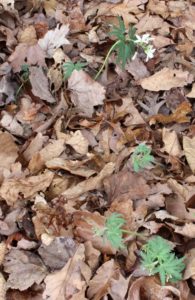
April 1st also saw Hepatica blooming in the woods.
Forsythia flowers were just opening up on 8 April.
April 9th was the last snow of the season.
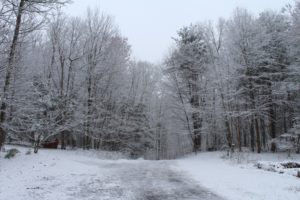
April 12th bluets first flowers just opening.
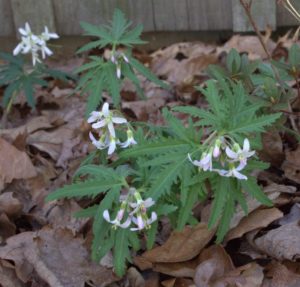
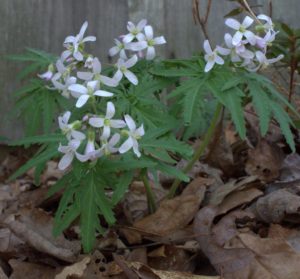
Cutleaved-toothwort-blooming in full – plant in rear was first to flower – others still have pink buds that will open unto these pretty white flowers with long petals and yellow stamens.
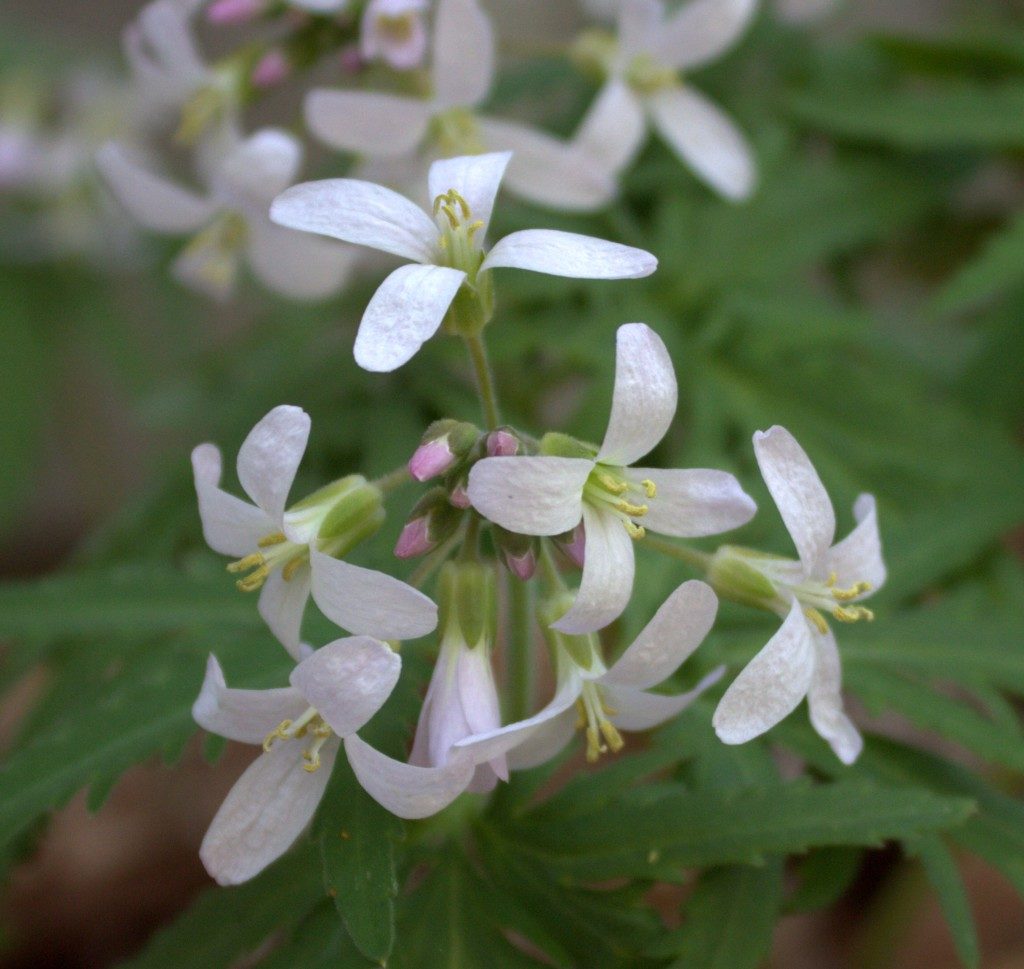
April 15 cutleaved-toothwort- closeup view of the four-parted blooms of cutleaved-toothwort. Blossoms are held high, above the dark green palmate leaves.
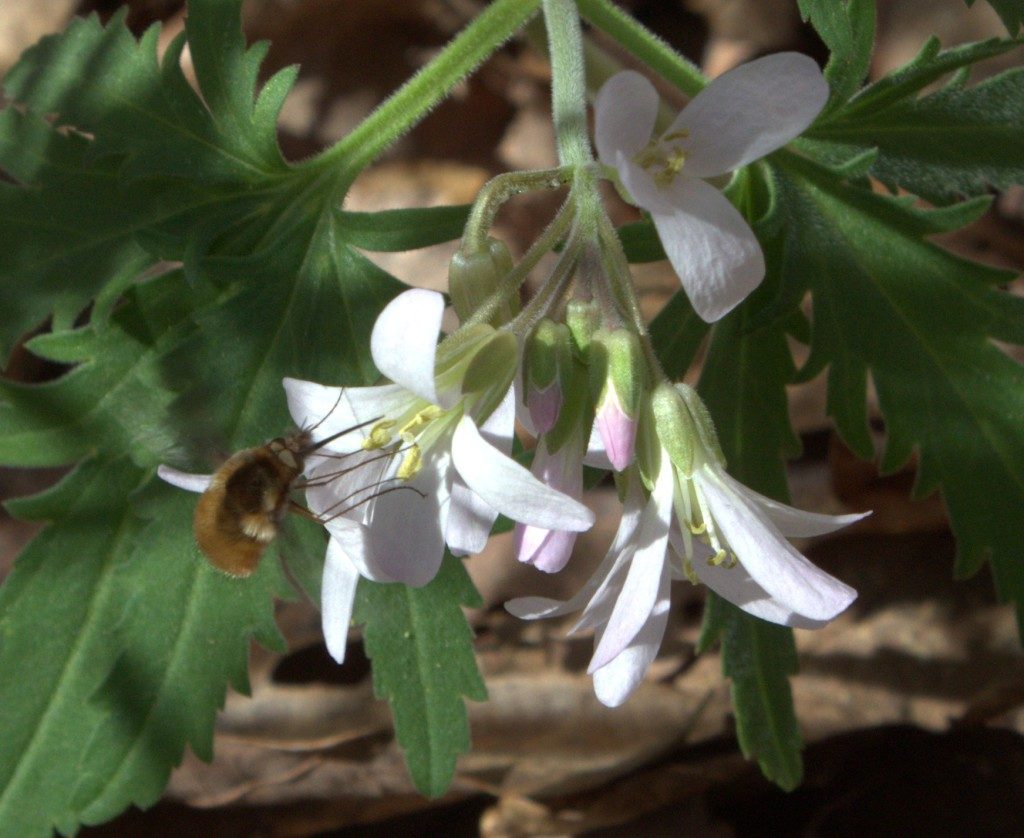
Is it a fly of some kind that’s having a meal of the cutleaved-toothwort? Look at his stylus! April 18th. Six-legged with wings a buzzin’ while he sipped some nectar. At ten o’clock in the morning these toothwort plants received shade, so their tops were bent toward the east in search of sunlight. By the afternoon they stand up much straighter.
Long-flowering plants. Still have a pink bud in the center of this cluster of cutleaf toothwort flowers and the outermost ones which bloomed first are making their seeds.

First flowering plant well on its way to making seeds by April 21st, almost a month after it started blooming.
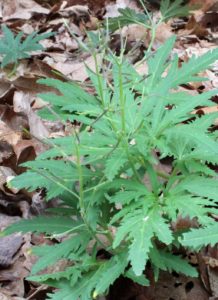
White petals all dropped by 6th of May, so that’s a six-week blooming period for this small group of woodland plants. I’ve only ever seen them in the woods and the first time I did they literally covered the forest floor. Once you saw them, you saw them everywhere! That was a cool feeling!
The tree canopy is pretty green now and it’s time for the Ephemeral Spring Flowers to fade away. It’s the middle of May so the blooms we see now and for the next month could be called late spring flowers. Happy hunting!
Where can I buy these? I can’t seem to find anyone who sells these:(
Hi Jennifer!
I’ve only found the cut-leaf toothwort in early spring in a woodland. I’ve never seen it offered for sale either.
What you might try is to find them in a forest and keep visiting them until you see the seeds produced. Then take a sample and try your luck. Or just transplant a couple of plants. Let us know how you do!
Thank you for your comment.